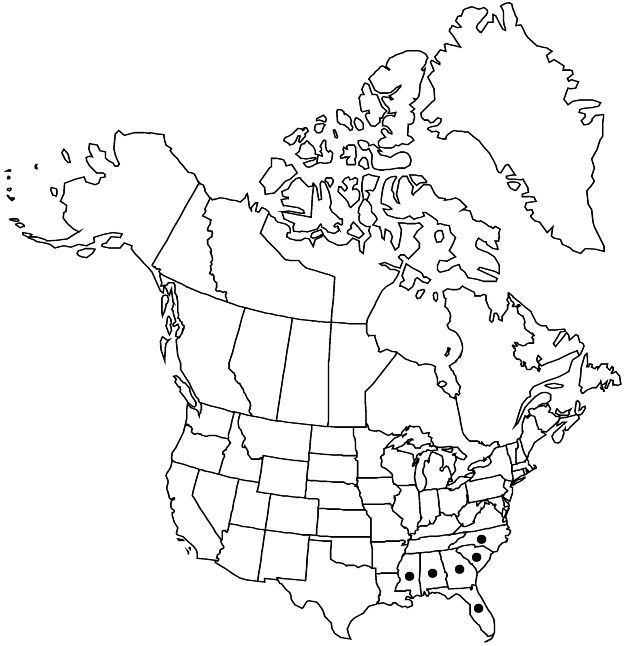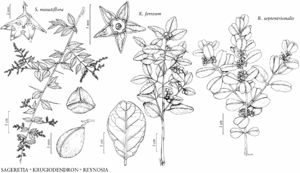Difference between revisions of "Sageretia minutiflora"
Contr. U.S. Natl. Herb. 6: 609. 1901.
FNA>Volume Importer |
FNA>Volume Importer |
(No difference)
| |
Revision as of 18:22, 24 September 2019
Shrubs or vines, loosely to compactly branched. Branches often sprawling, trailing, or clambering into trees, villous-tomentose, sometimes with understory of minute, erect, glandular hairs. Leaves persistent or tardily deciduous, opposite to subopposite; blade ovate to elliptic-ovate or broadly oblong-ovate, 1.5–4(–6) × 1–2 cm, base rounded to truncate-rounded or very slightly subcordate, margins shallowly serrate, apex acute to acuminate, surfaces glabrous; veins prominently raised abaxially. Inflorescences terminal and axillary, primary axis 5–15 cm, lateral branches 4–8. Drupes purple, subglobose to obovoid, 5–9 mm; stones 3.
Phenology: Flowering Aug–Sep.
Habitat: Calcareous rocky bluffs, forested shell middens on barrier islands, shell hammocks, evergreen hammocks, beach borders, live oak, palm, and deciduous woods.
Elevation: 0–30 m.
Distribution

Ala., Fla., Ga., Miss., N.C., S.C.
Discussion
Sageretia minutiflora are apparently most commonly weak-stemmed shrubs clambering over and through other shrubs, but they also may be distinctly viny, reaching to eight meters in trees. Lateral branches may self-prune, resulting in ropelike lianas.
Plants of central Mexico identified by R. Fernández (1996) as Sageretia minutiflora, far disjunct from its range in the southeastern United States, instead are S. mexicana G. L. Nesom.
Sageretia michauxii Brongniart is a superfluous name that pertains here.
Selected References
None.
